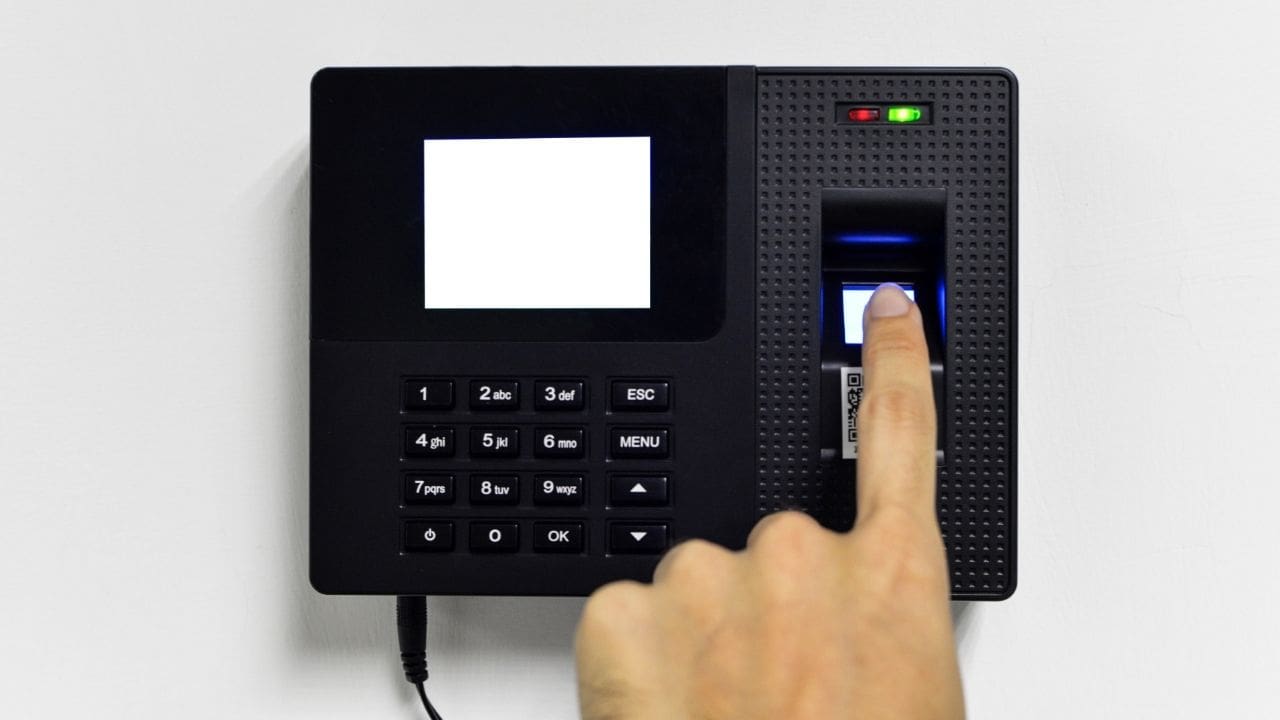What Are Biometric Locks?
Biometric locks are security systems that use distinct biological identifiers, such as your face or fingerprint, to unlock a door, safe, or gadget. Biometric systems rely on information that cannot be replicated, in contrast to conventional locks that are susceptible to being picked, copied, or lost. There are several types of biometric authentication methods used in home security:- Fingerprint scanners
- Facial recognition systems
- Retina and iris scanning
- Voice recognition
Why Are Biometric Locks Gaining Popularity?
1. Enhanced Security
It is possible to copy keys, pick conventional locks, and guess combinations. Biometric traits, however, are unique to each person and extremely difficult to forge. This dramatically reduces the chances of unauthorized access. Advanced encryption and data protection measures also make it hard for hackers to intercept or manipulate biometric data.2. Convenience and Speed
How often have you lost your keys or forgotten your door code? With biometric locks, your body is your key. You can unlock your door in seconds with a fingerprint or facial scan, no fumbling, no searching, no forgetting. It’s not just about convenience; it’s about seamless, efficient living.3. Customizable Access Control
Biometric locks allow homeowners to grant and revoke access to individuals in real time. You can authorize temporary access to a house sitter, cleaner, or guest — and remove it once it’s no longer needed. Many systems also maintain access logs, so you know who entered your home and when.4. Integration With Smart Home Ecosystems
Modern biometric locks often integrate with smart home systems like Amazon Alexa, Google Home, or Apple HomeKit. You can remotely lock or unlock your door, receive alerts, and control access using your smartphone. This kind of connectivity boosts both convenience and security.How Do Biometric Locks Work?
The process is quite simple yet sophisticated:- Registration – You scan your fingerprint (or face, depending on the model), and the system stores that data securely.
- Authentication – Each time you place your finger on the sensor, the system compares it to the stored template.
- Access Granted or Denied – If there’s a match, the door unlocks. If not, it stays locked and may trigger an alert depending on the system’s setup.
Types of Biometric Locks for Home Use
There are several types of biometric locks designed specifically for residential use:- Fingerprint Door Locks
The most common type, these use a scanner to recognize the unique patterns of your fingerprint. They’re widely used due to their reliability and affordability. Some models include backup keypads or mechanical keys for emergencies. - Facial Recognition Locks
These locks use advanced cameras and AI to identify faces and grant access. Facial recognition is fast, contactless, and effective even in low light, making it a suitable option for modern homes. - Voice Recognition Locks
Although less common for residential use, voice-activated locks are gaining traction. These systems analyze your vocal patterns to verify your identity and are often used in combination with other biometric features for added security. - Retina/Iris Scanning Locks
Used mostly in high-security environments, these locks are starting to make their way into luxury homes. They offer unparalleled security but can be costly and may require specific lighting or positioning to work accurately.
Are Biometric Locks Secure?
Yes, they are very secure, but not infallible. While biometric data is much harder to hack than a 4-digit PIN, the security level depends on the quality of the lock and how it is installed and maintained.Here are some best practices to maximize security:
- Choose reputable brands with strong encryption.
- Update firmware regularly to patch vulnerabilities.
- Work with a professional 24/7 emergency locksmith to ensure correct installation.
- Enable multi-layered access.
Future Trends in Biometric Home Security
The field of biometrics is rapidly evolving. Here’s what the future may hold:
- Multi-Modal Authentication
Rather than relying on a single trait, future systems may require two or more forms of identification. For example, a fingerprint plus facial recognition for higher security. - AI-Driven Threat Detection
Smart biometric systems are beginning to incorporate AI that can detect unusual behavior such as attempted spoofing, repeated failed access attempts, or access at odd hours and alert homeowners in real time. - Biometric Wearables
Consider utilizing a smartwatch that can detect your vein pattern or heartbeat to unlock your door. Wearable biometric devices may soon become part of a seamless, mobile home security solution. - Improved Accessibility
As technology matures and becomes more affordable, biometric locks will become accessible to a broader range of users, not just luxury homeowners or tech enthusiasts.
How to Choose the Right Biometric Lock
Before investing in a biometric lock, consider the following:
- Compatibility: Make sure it works with your existing door and smart home systems.
- Security Features: Look for encryption, multi-user capability, and backup options.
- User Management: Choose a model that makes it easy to add or remove users.
- Power Supply: Some run on batteries, others require hardwiring. Check for low-battery alerts and emergency power options.
Conclusion
The method by which we secure our homes is changing as we progress farther into the digital era. Biometric locks offer an unmatched combination of security, convenience, and control, making them the logical next step in home protection.At WFX, we believe that smarter living starts with smarter security. By embracing cutting-edge solutions like biometric locks, homeowners can take full control of their personal safety without compromising on convenience. The future of home security is personal, intelligent, and keyless and it’s already here.




